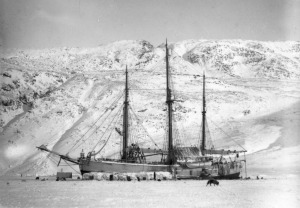Another delay!We were totally convinced that today would be the day, but once again we had discouraging news. Everything remains uncertain, but now they are talking about Monday as the next possible opportunity. Our patience is starting to wear very thin, even though we were fully cognizant of the risk that it might turn out like this.
“Thick fog. Stiff breeze from SE. Snowing and snowdrift. It was not a good day for travelling.”– Amundsen on this day 100 years ago (Read more …) 
We try to console ourselves by saying that this is nothing compared to what others have experienced near the poles. “Many of the people who have travelled to Antarctica in modern times have had to wait several weeks for good enough weather to fly in or out,” says Jan-Gunnar in an effort to cheer us up. “This is nothing compared to back in the old days,” says the polar historian. Back then the delays could last months or years. Nansen had to spend the winter in Greenland when he missed the last boat destined for Europe in 1888. The second Fram expedition– against their will – were frozen in for a second winter when they could not break free of the ice in 1901. And the man who later became director of the Norwegian Polar Institute, Harald Ulrik Sverdrup, spent seven years aboard Maud from 1918 to 1925. “But those men were made of sterner stuff than modern human beings,” says Stein drily. “We lost our patience gene somewhere along the way.” “Come on, guys,” says Vegard encouragingly. “Let’s go to town and buy some jogging shoes and shorts and go out running!” Did you know that Antarctica is reserved for peace and research?
Antarctica is the only continent in the world where there has never been an armed conflict. To gain admission into Antarctic cooperation, a nation must actively carry out research there. |
South Pole 1911–2011 is an informational outreach project run by the Norwegian Polar Institute
Contact person:


